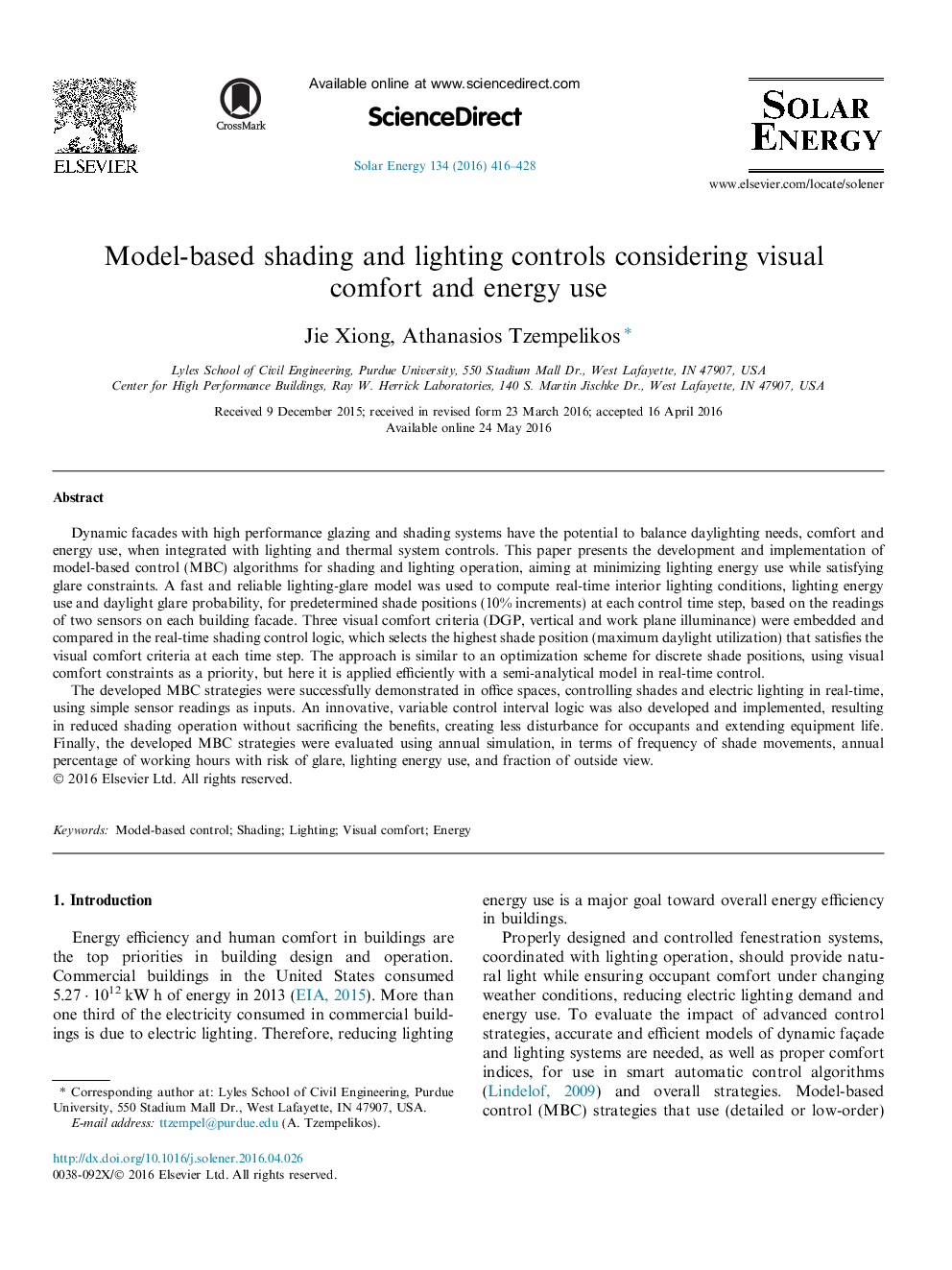| کد مقاله | کد نشریه | سال انتشار | مقاله انگلیسی | نسخه تمام متن |
|---|---|---|---|---|
| 1549314 | 1513084 | 2016 | 13 صفحه PDF | دانلود رایگان |
• Model-based shading and lighting controls were developed using minimal sensor inputs.
• Three visual comfort criteria were embedded in the logic and compared.
• The MBC strategies were successfully implemented in full-scale offices.
• A new variable control interval logic reduced shading movement frequency.
• Annual simulation was used for overall evaluation of the MBC strategies.
Dynamic facades with high performance glazing and shading systems have the potential to balance daylighting needs, comfort and energy use, when integrated with lighting and thermal system controls. This paper presents the development and implementation of model-based control (MBC) algorithms for shading and lighting operation, aiming at minimizing lighting energy use while satisfying glare constraints. A fast and reliable lighting-glare model was used to compute real-time interior lighting conditions, lighting energy use and daylight glare probability, for predetermined shade positions (10% increments) at each control time step, based on the readings of two sensors on each building facade. Three visual comfort criteria (DGP, vertical and work plane illuminance) were embedded and compared in the real-time shading control logic, which selects the highest shade position (maximum daylight utilization) that satisfies the visual comfort criteria at each time step. The approach is similar to an optimization scheme for discrete shade positions, using visual comfort constraints as a priority, but here it is applied efficiently with a semi-analytical model in real-time control.The developed MBC strategies were successfully demonstrated in office spaces, controlling shades and electric lighting in real-time, using simple sensor readings as inputs. An innovative, variable control interval logic was also developed and implemented, resulting in reduced shading operation without sacrificing the benefits, creating less disturbance for occupants and extending equipment life. Finally, the developed MBC strategies were evaluated using annual simulation, in terms of frequency of shade movements, annual percentage of working hours with risk of glare, lighting energy use, and fraction of outside view.
Journal: Solar Energy - Volume 134, September 2016, Pages 416–428
